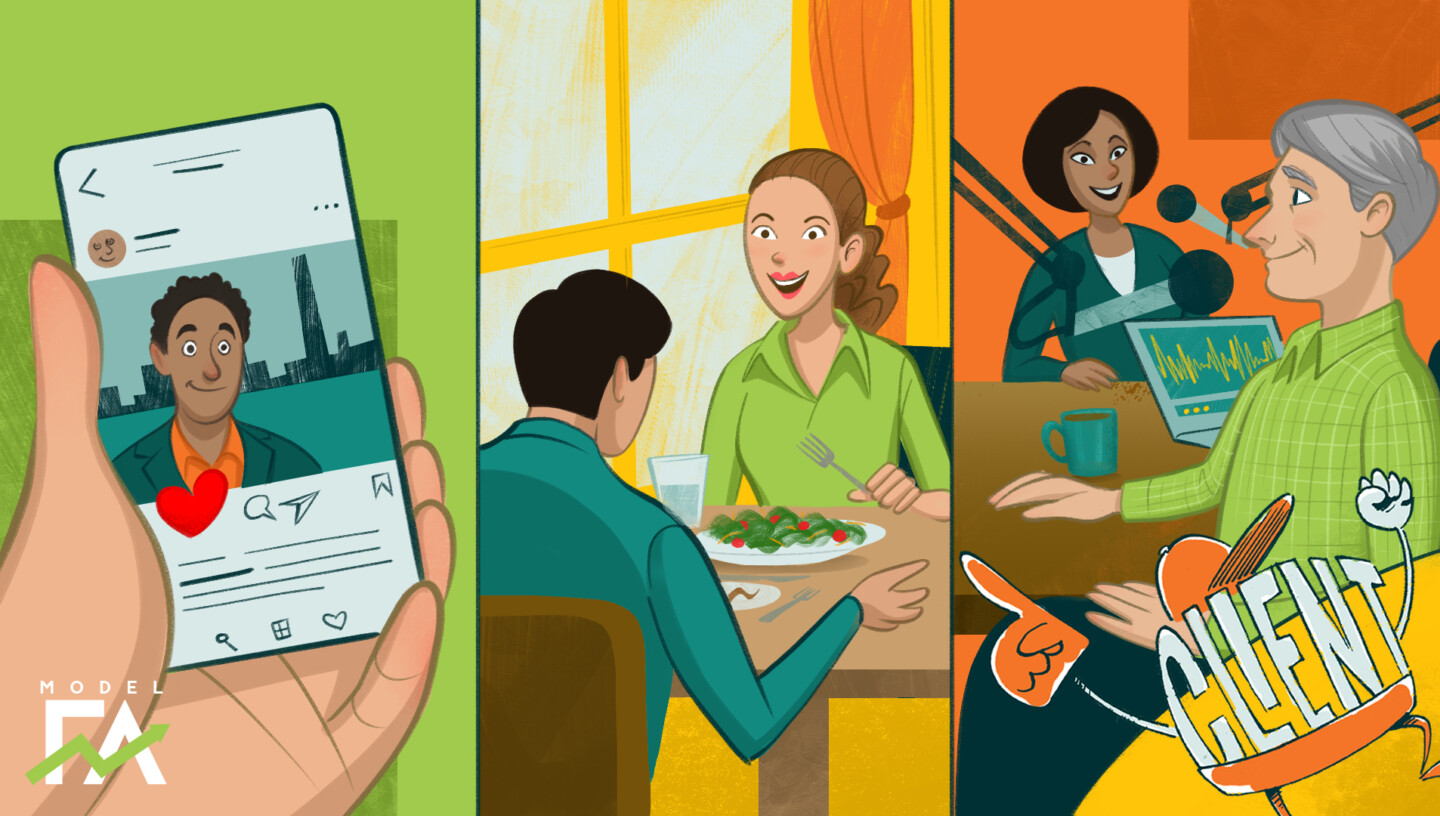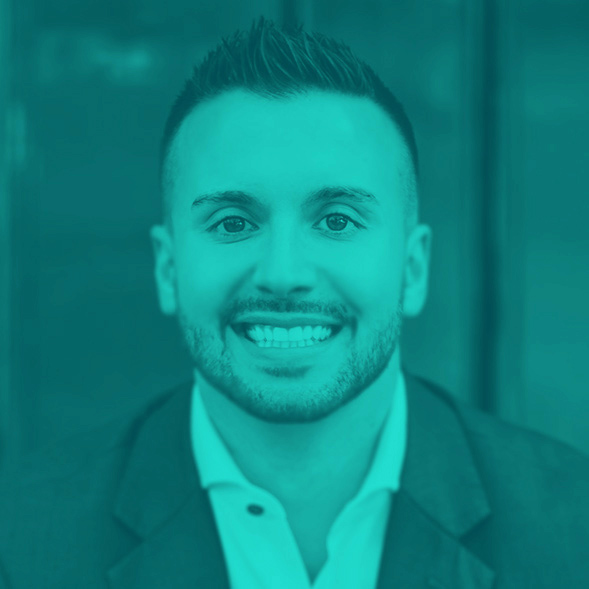The Exponential Relationship System: How to Grow Rapidly through Strategic Relationship Development
04.08.21 | David DeCelle | 0 Scale
Summary: You can’t rely on automation for all your marketing, nor can you spread yourself across 100 clients. Automated messages and check-the-box touchpoints can make clients feel as though you don’t really care. Instead, focus on your top 10–15 relationships and actively nurture each one. Doing so will turn these people into raving fans that do much of your marketing for you.
Marketing automation has been a trend for good reason. It saves time and can potentially increase your marketing ROI. Plus, you can bring automation into nearly every aspect of marketing today. Doing this sounds tempting, especially if you dislike the marketing side of running your business.
However, the easy accessibility of marketing automation has caused its popularity to explode — so much so that it has become transparent to consumers. We have all received emails with “Hi {First Name}” in the header or in the subject line, which is a tell-tale sign of an automated message gone wrong. This is a good example of how excessive automation can harm your brand. Of course, every client knows that they are not your only client; still, there is no value in making it obvious.
So: It’s fine to automate specific actions, such as responding to an email list signup or a contact form submission. However, if you want to stand out, you must be human. That means doing intentional outreach, creating original content, and personalizing communications with your top clients and prospects.
And yes, automating away the small things creates extra time for these activities.
This leads us to the Exponential Relationship System (ERS).
The Three W’s of the Exponential Relationship System
The ERS combines digital, social, and traditional marketing methods and channels with a proven sales framework that creates trust with your audience and turns them into loyal fans. In using ERS, you focus on nurturing a few relationships deeply (instead of managing tens or even hundreds of more superficial relationships).
There are three W’s that you must get right in order to make ERS work for your practice.
- Who: The people you’ll build relationships with
- What: The things you’ll do to build those relationships
- When: How much time you spend each week on relationship building
Let’s dive into them, one at a time.
Who
You can’t build deep, meaningful relationships with 120 clients at the same time. You’ll never be able to give each one the time, attention, and service they need from you.
Instead, identify the 15 people with the greatest potential to benefit your business. Your list could include current clients, prospective clients, friends, family, COIs, and influential members of your community. This is the first group of people you’ll focus on. Some people will move onto or off this list, that is a normal part of ERS. Plan to refresh the list every 30 days to make sure it’s made up of people with the greatest potential for positive impact.
What
You want to make every person on your list feel special by providing personalized outreach and communications.
Think of the very next action you can do to serve each of your 15 most important people. Without intentional touchpoints, relationships fade — so you must be clear and intentional. Every communication with these people must offer them a benefit or add value. For example, you might share a piece of retirement planning content with a client who’s in their late 50’s.
When
Finally, decide when and how often you will perform these marketing activities. If your practice is in growth mode, plan to spend at least two hours per week following the ERS process. If you can’t carve out this time in your schedule, you won’t have the capacity necessary for growth. If you are struggling to find the time and stay consistent, examine whether you have room in your practice for more clients.
The headliner list
As I mentioned earlier, you must focus on the 15 people who will help move your business forward. These are your “headliners” — those who could have the maximum potential to boost your growth if you develop proper relationships with them.
The exact headliners will depend on your practice, your niche, and your current client list. However, here are some broad categories of people that could make up your headliners.
- Current clients
- COIs
- Friends
- Family
- Prospects you know
- Prospects you don’t know
Ideally, your headliners are a balance of people you know and the people who are not yet in your network.
To keep track of these headliners, create a “headliner list.” In addition to their name, list their current relationship stage (from target or acquaintance, to a lead, to a new client, to loyal client, and finally to a raving fan). Make a separate column for the next actionable step you can take to deepen each relationship.
When you’ve filled out your list, begin taking that actionable step you listed for each headliner. Once you’ve taken that step, write in a new action you can take to continue moving things forward and repeat until they are a raving fan (or off the list for another reason).
Remember to refresh the list every 30 days by removing people who are no longer relevant to the process of developing your business.
Ideas for how to add value at every stage of the relationship
Adding value to move relationships forward does not have to take a long time or cost a lot of money. Here are some ideas.
Target/acquaintance
- Send a Loom video introduction on LinkedIn
- Send relevant content, such as videos or articles
- Send a book with a handwritten note
- Invite to coffee, lunch, or dinner
- Comment on their LinkedIn content
- Retweet or share their content
- Introduce someone they’ll find useful
Lead
- Introduce someone they’ll find useful
- Send a book with a handwritten note
- Invite them onto your podcast
- Invite to coffee, lunch, or dinner
- Comment on their LinkedIn content
- Retweet or share their content
- Inform them of industry events
- Spotlight them in your newsletter
New client/good working relationship/loyal client
- Introduce someone they’ll find useful
- Invite them onto your podcast
- Invite them to a client appreciation event
- Call them to see how they’re doing (with no agenda)
- Send them a handwritten thank-you note
- Spotlight them in your newsletter
Raving fan
- Ask for referrals or introductions to people in their network
- Invite them to participate in an advisory board
- Introduce someone they’ll find useful
- Invite them onto your podcast
- Invite them to a client appreciation event
- Call them to see how they’re doing (with no agenda)
- Send them a handwritten thank-you note
- Spotlight them in your newsletter
Hone your best few relationships for optimal growth
If you’d like some help picking your headliners and building those relationships, reach out to us at ModelFA. We’ll help you identify those who have the largest potential impact on your business, then explore ways to move those relationships forward with intention. Schedule a call with me today to get started: https://www.modelfa.com/accelerator-call-cf/
